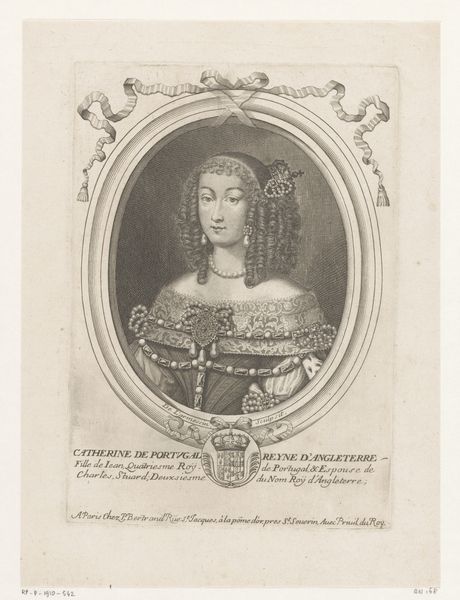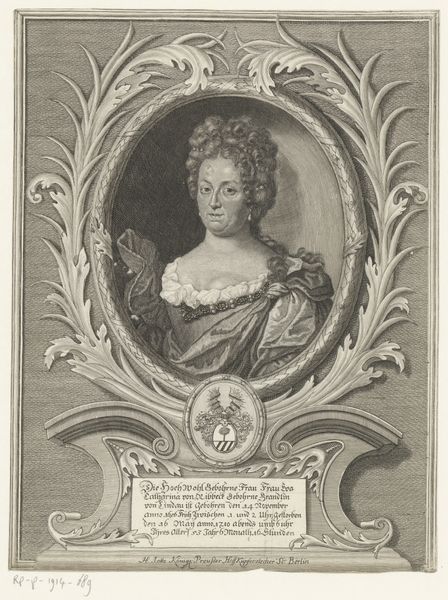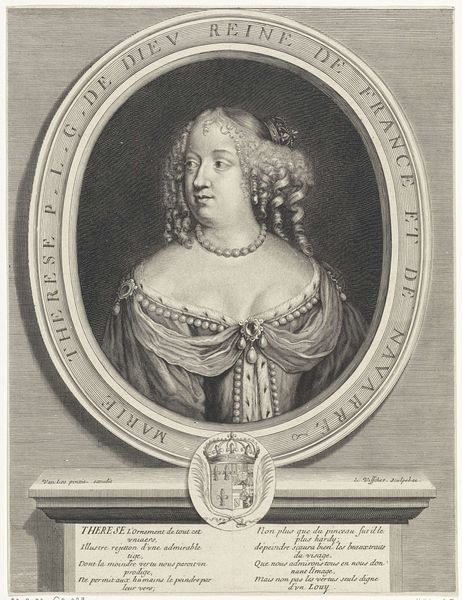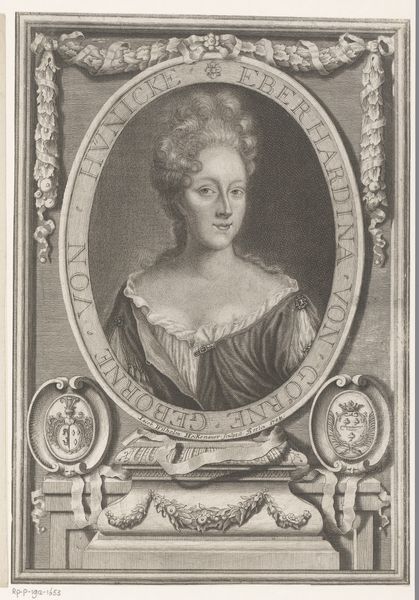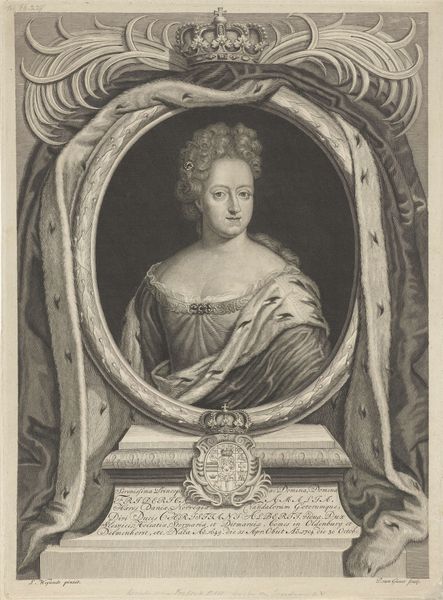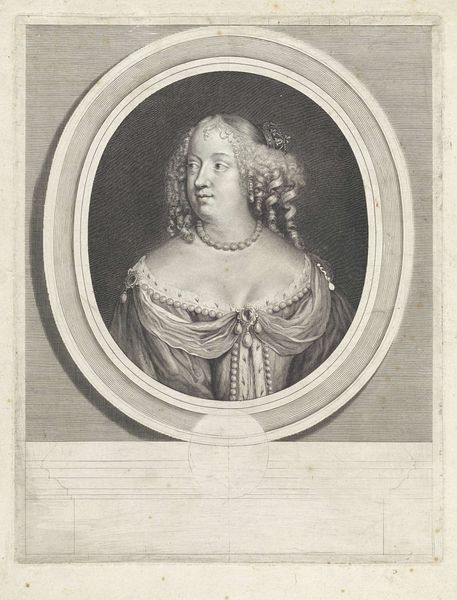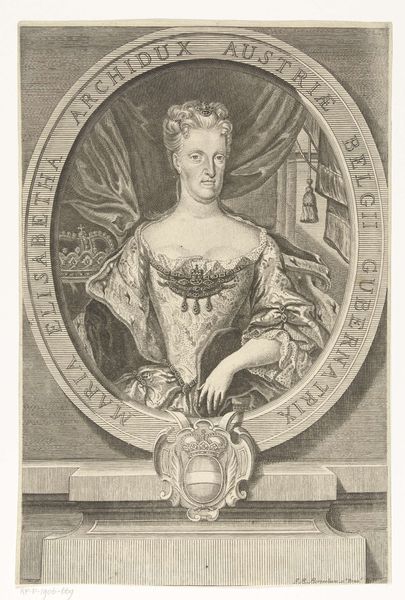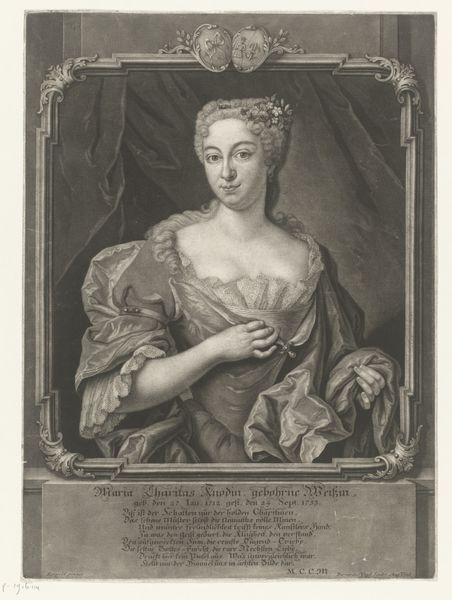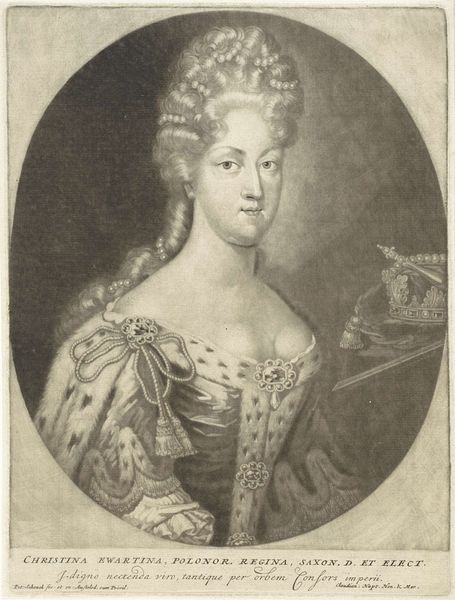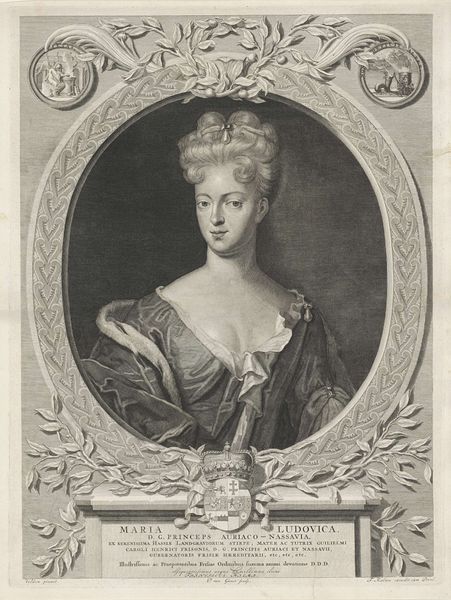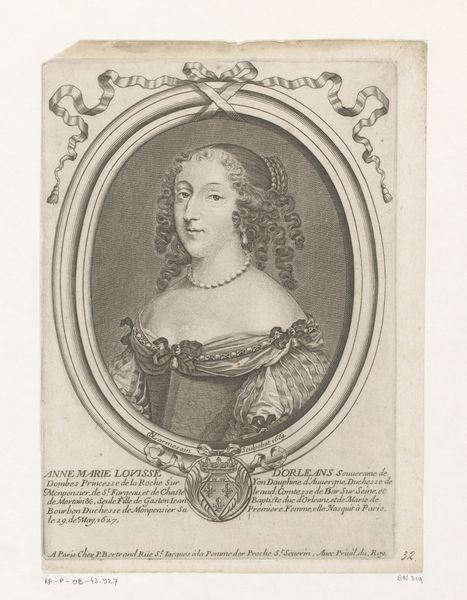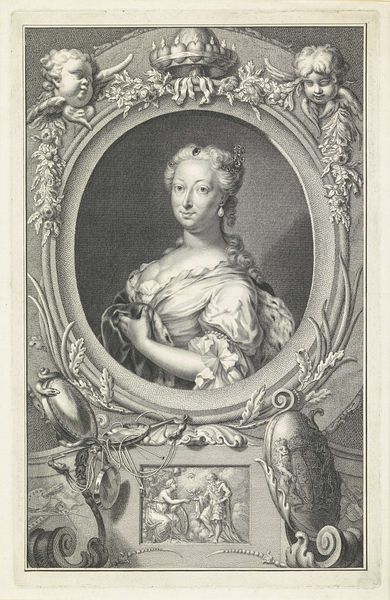
engraving
#
portrait
#
baroque
#
old engraving style
#
caricature
#
history-painting
#
engraving
Dimensions: height 227 mm, width 162 mm
Copyright: Rijks Museum: Open Domain
Curator: This engraving, "Portret van Maria Johanna Baptiste," or "Portrait of Maria Johanna Baptiste, Duchess of Savoy," created around 1668, is attributed to Nicolas de Larmessin the First. Editor: It strikes me as rather… opulent. The delicate lines used to define the dress, and the overall rendering are quite captivating. It really gives an impression of status and controlled authority. Curator: Absolutely. It's important to understand that portrait engravings like this one were instruments of power. They circulated images of the ruling elite, solidifying their image, particularly as it depicts Marie Jeanne Baptiste, not just as Duchess of Savoy but also presenting her as royalty who wielded considerable political influence. The baroque frame reinforces the image's importance. Editor: What is most striking is the precise application of line work! We're seeing a mechanical reproduction striving to capture and disseminate something intended to represent human nobility... The coat of arms underneath really centers it! Were engravings like these typically sold to a wider audience or reserved for an elite viewership? Curator: Good question! They were more accessible than painted portraits but still catered to a literate and reasonably well-off segment of society. Think of it as a form of propaganda, aimed at reinforcing the social order. And consider the publisher mentioned at the bottom, operating under the King's privilege! Editor: Right, the means of production are clearly embedded within the monarchy's cultural apparatus. I imagine the choice of paper stock also reflects this dynamic. It also seems quite removed, so, I feel like there is this almost a distance to the final output. Curator: The cool, clean precision contributes to that. While we might be distanced from it now, back then it served an important role in visual culture and political life, circulating ideals and reaffirming aristocratic dominance. Editor: Interesting. The technical choices truly solidified a place within its contemporary political and social fabric. Curator: Precisely, thinking about who controlled the press is just as vital as aesthetic judgements.
Comments
No comments
Be the first to comment and join the conversation on the ultimate creative platform.
